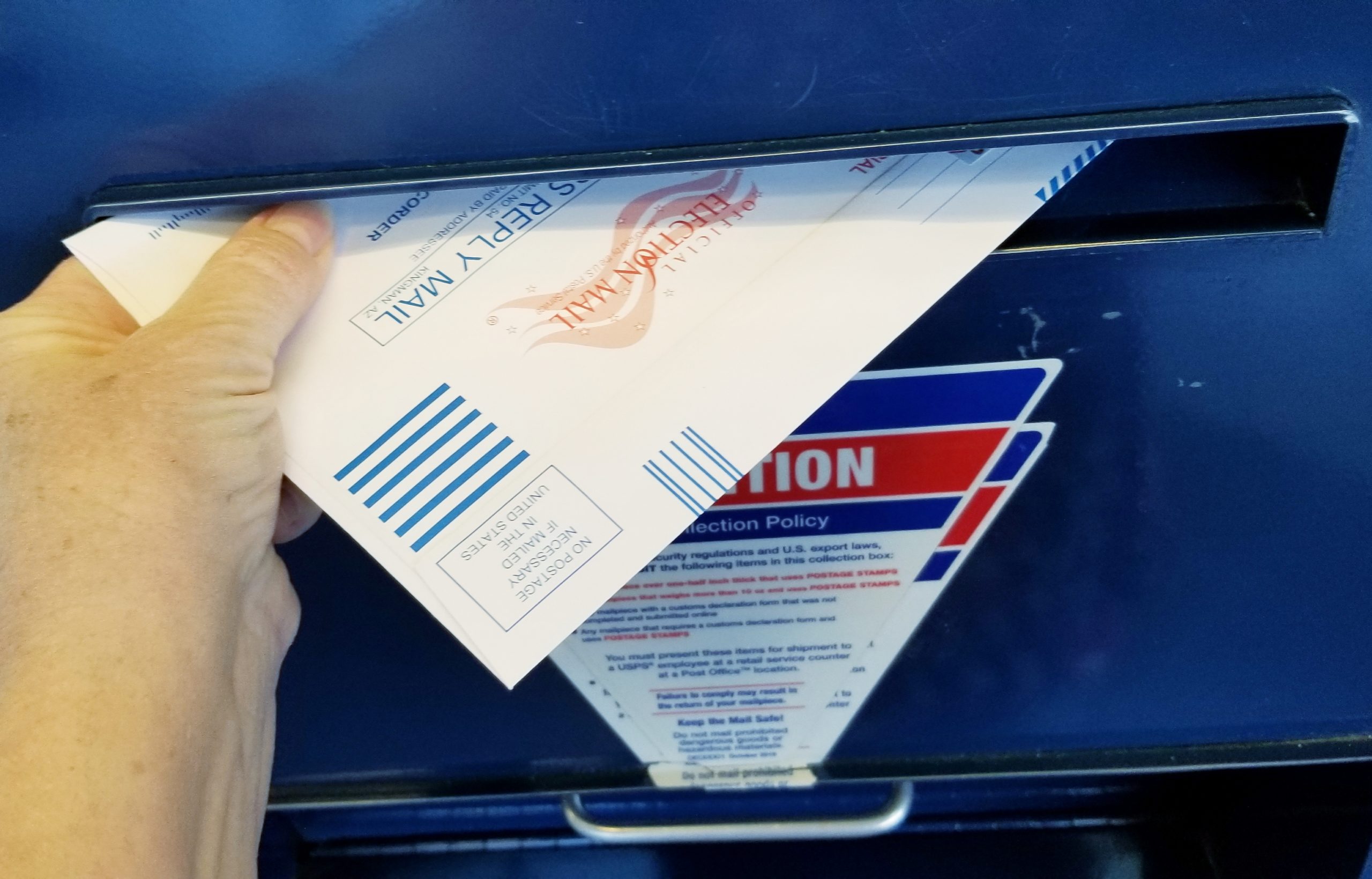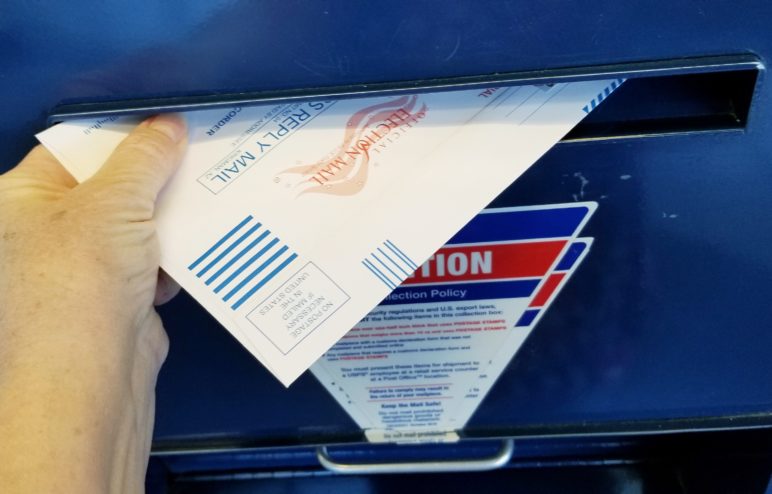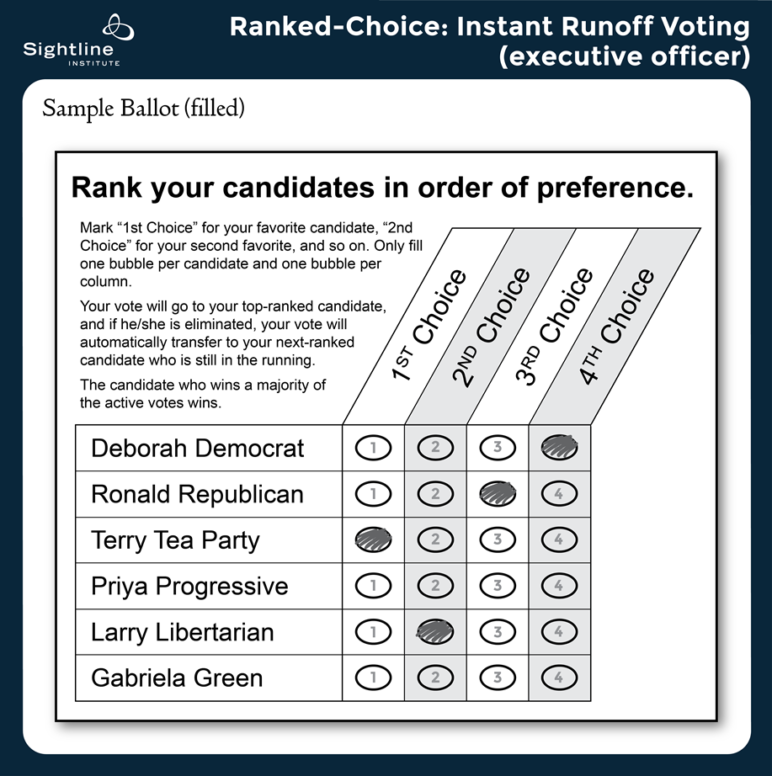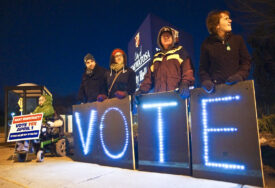UPDATE 06/30/23: The Oregon legislature passed a measure on June 25, that lets voters decide whether to adopt ranked choice voting in statewide elections, including those for president, US House and Senate, and governor. If approved by voters, the measure would also give cities, school districts, and other local entities in Oregon the choice to adopt ranked choice voting in their elections. The question will appear on the November 2024 ballot.
UPDATE 03/24/23: Public comment on HB 2004 was heard by the House Committee on Rules on March 16 and March 21. The bill is now waiting for a work session and recommendation from the Committee to advance.
Oregonians deserve the ability to vote for candidates that share their values and represent their communities, but the state’s current election system too often discourages voters from doing that. Almost every election comes with a discussion of “spoiler candidates,” voting for somebody who’s “more electable,” being sure not to “waste your vote,” or even “a vote for Candidate X is a vote for Candidate Y.” Voters are often wary of voting for a less popular candidate they might prefer, worrying that doing so may just help their least favorite major-party candidate win.
But a new bill sponsored by Speaker of the Oregon House Dan Rayfield, a Democrat representing Corvallis, could allay voters’ calculations about spoilers.1HB 2004 would let voters choose whether to adopt ranked choice voting, also called instant runoff voting, in primary and general elections for state and federal office.2If voters opt to reform the election system in 2024, Oregon elections would no longer be limited to selecting a single candidate (though they could choose just one if they wanted to). Instead, voters would be free to rank candidates in order of preference.3 If no candidate receives more than 50 percent of first preferences, ballots go to further rounds of counting where last-place candidates are eliminated and their voters’ later choices are considered, continuing until one candidate has over 50 percent of the vote among the remaining candidates.
Voters would also get to decide whether the Oregon Secretary of State’s office should provide guidance on implementation for jurisdictions adopting ranked choice voting for their local elections. This would ease some of the burden for cities and counties looking to follow in the path of Benton County, Corvallis, Portland, and Multnomah County.
Ranked choice voting beats Oregon’s current pick-one voting system on a few key measures, particularly in contests where voters have more than two candidates to choose from (as they do in almost every state election). Here are five reasons voters win out with the option to rank candidates on their ballots:
1. Winners earn stronger bases of support
Pick-one elections often work fine for elections with just two candidates in the running: voters select their favorite, and the person with more votes wins. But things get tricky when voters have three or more candidates to choose between.4 Maybe only 40 percent of voters cast their ballots for the winner, while two contending candidates each receive 30 percent. Or maybe there are ten candidates, and the winner comes out with support from only 15 or 20 percent of voters. When the top candidate has a plurality (the most votes) but not a majority (more than half of the votes), more voters voted against the winner than for them.
This happens all the time in Oregon. Of the seven gubernatorial elections since 2000, four saw the winning candidate finish with less than 50 percent of the vote.5 In 2022, with high-profile nonpartisan candidate Betsy Johnson drawing nine percent of the vote, Tina Kotek won the race for Governor with only 47 percent of voters supporting her.
It’s even worse in primary elections. Oregon’s Republican primaries for governor since 2000 usually saw nine or ten candidates,6 and in only one race did a winner receive a majority of the vote.7 2022 was a particularly extreme example of this, with 19 candidates running; Christine Drazan came out on top but garnered only 23 percent of the vote. But say those other 77 percent of voters really didn’t like Drazan, and voters would have jointly preferred another candidate even if their first choice lost. Those 18 other candidates split the anti-Drazan vote, and the Drazan supporters, a small minority overall, got to pick their favorite, overriding the majority.8
Ranked choice voting would help that majority coalesce around a single candidate, mitigating vote splitting among multiple similar options. Since Drazan wouldn’t be immediately elected in the first round of counting, later rounds might show that a stronger candidate had the support of more voters. Or they could show that other voters did support Drazan, giving her a clearer base of support heading into the general election. By counting voters’ later choices once their first choice has been eliminated, ranked choice voting helps identify stronger candidates that are supported by more voters. That means stronger party nominees, happier voters, and officeholders that know they’ve appealed to Oregonians.
2. Minor-party candidates don’t invert results
Pick-one voting is also heavily vulnerable to spoiler candidates, a specific type of vote splitting where a minor candidate siphons enough voters away from the leading major candidate closest to their platform that the major candidate loses the election. This happened quite famously in the 2000 presidential election in Florida when Green Party candidate Ralph Nader, whose voters generally preferred Democrat Al Gore over Republican George W. Bush, received nearly 100,000 votes and Bush beat Gore by just over 500 votes.
Closer to home, the 1990 Oregon gubernatorial election saw anti-abortion independent Al Mobley draw 13 percent of the vote, likely from voters who otherwise would have supported Republican Dave Frohnmayer, leading to the election of Democrat Barbara Roberts with the support of only 46 percent of voters. And in Maine, far-right Governor Paul LePage won his two elections when voters split between a left-leaning independent and a Democrat. This was one major impetus behind Maine’s ballot measure moving the state to ranked choice elections.
But just like vote splitting more generally, ranked choice voting helps deal with spoiler candidates sensibly. The minor candidates are eliminated in early rounds because they received the fewest votes, and their voters’ later choices are counted to see which remaining candidate is preferred by a majority of voters. A minor candidate with only a few points of the vote won’t throw the election to a different major candidate.
3. Voters can choose their honest favorite
Due to a (very sensible) fear of slim plurality winners and spoiler candidates, the pick-one system incentivizes many voters to cast their ballots strategically, picking a candidate they see as electable rather than the candidate they like the most—somebody they think can win, not somebody they think should win. And campaigns take full advantage of this, spending chunks of their time and money on arguments about feasibility instead of making the substantive case for their candidate. I can’t even count the number of pro-Tina Kotek ads I saw last fall that said “I like Betsy Johnson, but she can’t win” or “a vote for Betsy Johnson is a vote for Christine Drazan.”9
Ranked choice voting changes this dynamic entirely. Since their second choice will count if their first choice is eliminated, voters can support a less popular candidate without “taking votes away” from a more popular candidate. Maybe the first round of that Florida election looks the same, with Nader receiving two percent of the vote, but the second round of counting, when Nader voters’ second choice votes are tallied, puts Gore over the top. Or you can honestly vote for Betsy Johnson first and still know that if she loses in the first round, your vote will count for Tina Kotek in later rounds.
4. More representative candidates can run and win
Thanks in large part to vote splitting, voters and candidates in a pick-one system know they must act strategically, angling to end up with a least-bad outcome. Voters often judge women as “less electable” than men, pushing women candidates more often into the trap of feasibility and strategic voting. And candidates often must decide even before entering a race whether their presence would lead to vote splitting and help elect a minority-preferred contender. This frequently applies to less established third-party candidates, women, and people of color. In Chicago’s mayoral election last month, the chair of the City Council’s Black Caucus publicly called for some candidates to drop out to avoid splitting the vote among Black candidates.
When communities can better coalesce around their preferred candidates under ranked choice voting, those candidates can worry less about electability or vote splitting. That likely means opportunities for more women, people of color, and minor candidates to run and earn votes with lower likelihood of throwing the election to a less-preferred winner. One study found that in the Bay Area, women were more likely to win elections in ranked choice cities than in cities that had not adopted ranked choice voting. In 2006, San Francisco used ranked choice voting to elect a new Supervisor from the majority-Asian District 4, and four Asian candidates ran against two white candidates. While no candidate had more than about a quarter of the vote in the first round of counting, large numbers of second- and third-preference votes from supporters of other Asian candidates in the race helped put Ed Jew over 50 percent in the final round. Even if votes were split among those Asian candidates in round one, ranked choice voting helped those voters to join forces with their second- and third-choice votes behind a candidate of their choice, even with multiple candidates running.
Better voice, better choice
Ranked choice voting holds a lot of promise for Oregonians, helping to mitigate the current pick-one system’s high potential for vote splitting without placing heavy limitation on voter choice and candidate entry. Voters can expect more winners who’ve received votes from a majority of voters, a greater range of choices on their ballot, and officeholders more likely to represent their preferences. Candidates win by running campaigns more focused on the issues, dodging negative rhetoric and arguments about electability. HB 2004 is a major opportunity for the state to support more responsive democratic outcomes.
CLARIFICATION: We have revised the article to clarify that Oregon voters would need to approve the use of ranked choice voting. When Sightline originally published this article, the bill had not yet been amended to put these election reforms up to a vote of the people.
Thanks to Research Assistant Nakeshia Diop for contributing research to this article.











John Whitmer
I Hope Oregon’s House Committee on Rules, and their legislators generally, give thoughtful consideration to Lee’s excellent description here of ranked choice voting. In my opinion only those skeptical of democracy in general, of voters in particular, and unconcerned of the not infrequent disconnect between voters and those elected can honestly claim plurality (winner take all) voting is superior to RCV. Alas there are more than a few such folks, but of course admitting the real reasons – given above – for their opposition wouldn’t play so well. So better sounding reasons are given: RCV is too confusing, it involves long delays for results, it disenfranchises voters, it allows those with less votes to win, etc. (This disconnect between publicly given and real reasons is not exactly unknown in the political arena.) These “better sounding reasons” don’t have to be true – surface appearances are often quite enough. But surface-appearance arguments can, and often do, come back to bite those relying on them. RCV is inevitable; if not today, tomorrow, if not tomorrow the day after that. Oregon with HB2004 has a chance to do it “today” and get ahead of the curve.
Cletus the Magnificent
Oh and don’t forget jobs … RCV would cost good paying jobs! It would eliminate hard working Americans efforts to vote in a fair and honest election. RCV would take away your voting Freedom. It would deny our just due rights of free and fair gerrymandering.
Vote No on “First Past the Pole’ elections
mama_giraffe
Ranked choice voting perpetuates the conundrum of having only a single representative trying to represent diverse voters. Why not aim higher, and aim for reforms where almost every voter is represented by someone from a party whose views they espouse? Proportional ranked choice voting is the gold standard.
Jay Lee
We like proportional ranked choice voting too! So much so that we wrote a whole series of articles in the leadup to Portland, OR, adopting the system last fall.
This bill would provide more support for localities looking to use proportional ranked choice voting. Maybe in the coming years that change can come to the state legislature too.
Allan
My impression is that this was only passed because a bunch of advocates are trying to push for star voting in Oregon. I think this measure is trying to make it harder for this more substantial change to happen. My impression is that IRV is roughly 98% correlated with the status quo elections despite making some people feel better
Andyg
The Oregon bill still provides for closed primaries, so that small groups of partisans pick the candidates for the RCV vote. I don’t see how that changes things much. Why not have an open primary with the top 4 choices then advancing to the general election? Alaska does it this way now.